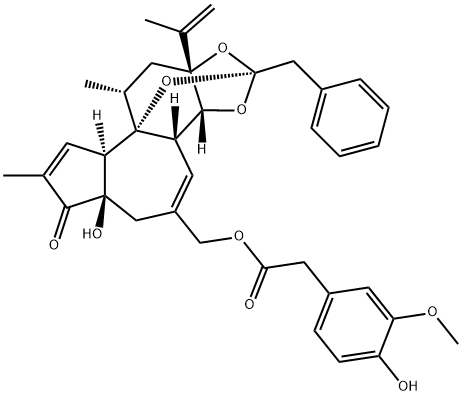SAFETY INFORMATION
| Signal word | Danger |
|---|---|
| Pictogram(s) |
 Corrosion Corrosives GHS05  Skull and Crossbones Acute Toxicity GHS06 |
| GHS Hazard Statements |
H301:Acute toxicity,oral H314:Skin corrosion/irritation H315:Skin corrosion/irritation H319:Serious eye damage/eye irritation H335:Specific target organ toxicity, single exposure;Respiratory tract irritation |
| Precautionary Statement Codes |
P261:Avoid breathing dust/fume/gas/mist/vapours/spray. P280:Wear protective gloves/protective clothing/eye protection/face protection. P310:Immediately call a POISON CENTER or doctor/physician. P305+P351+P338:IF IN EYES: Rinse cautiously with water for several minutes. Remove contact lenses, if present and easy to do. Continuerinsing. P405:Store locked up. |
COMPUTED DESCRIPTORS
| Molecular Weight | 628.7 g/mol |
|---|---|
| XLogP3 | 4.5 |
| Hydrogen Bond Donor Count | 2 |
| Hydrogen Bond Acceptor Count | 9 |
| Rotatable Bond Count | 9 |
| Exact Mass | 628.26723285 g/mol |
| Monoisotopic Mass | 628.26723285 g/mol |
| Topological Polar Surface Area | 121 Ų |
| Heavy Atom Count | 46 |
| Formal Charge | 0 |
| Complexity | 1330 |
| Isotope Atom Count | 0 |
| Defined Atom Stereocenter Count | 8 |
| Undefined Atom Stereocenter Count | 0 |
| Defined Bond Stereocenter Count | 0 |
| Undefined Bond Stereocenter Count | 0 |
| Covalently-Bonded Unit Count | 1 |
| Compound Is Canonicalized | Yes |
PRODUCT INTRODUCTION
description
Resiniferatoxin is a heteropentacyclic compound found in Euphorbia poissonii with molecular formula C37H40O9. It is an agonist of the transient receptor potential cation channel subfamily V member 1 (TrpV1). It has a role as a TRPV1 agonist, a plant metabolite, a neurotoxin and an analgesic. It is a diterpenoid, an ortho ester, a tertiary alpha-hydroxy ketone, a member of phenols, a monomethoxybenzene, an organic heteropentacyclic compound, a carboxylic ester and an enone.

